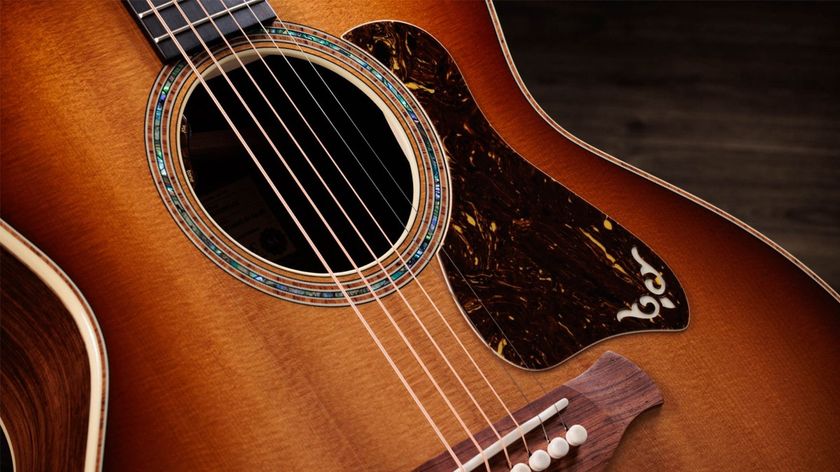How to Create “Outside” Lines with Fourth Intervals

Back in the April 2017 issue, my column focused on fourths when creating rhythm parts and solos.
The use of a combination of notes that are fourths apart, known as “stacked fourths” or “quartal voicings,” is a common sound in jazz.
On the guitar, stacked fourths are generally very easy to achieve, as all the pairs of adjacent strings, with the exception of the G and B, are a fourth apart, meaning that if you sound the open low E and A, the open A and D, or open D and G string together, the relationship between the two notes is that of a fourth. The same is true when you sound the B and high E strings. The G and B strings are a major third apart.
This month, I’d like to apply the use of fourths to what is often referred to as “outside” playing. As the term implies, “outside” licks include notes that reside outside the established key and intentionally sound “wrong,” though, to me, they work! In fact, licks like these never sound wrong to me—they sound right by taking you into some other territory, musically speaking, that the listener is not expecting.
A song that represents one of my first exposures to “outside” sounds is a song called “Freedom Jazz Dance,” written by Eddie Harris and famously recorded by Miles Davis, among other jazz artists. The majority of the melody is based on stacked fourths, but here I would like to focus on the very last part of it, as it starts in key but then drifts in and out momentarily, creating a compelling feeling of tension and release.
FIGURE 1 illustrates a two-bar vamp based on Bb7#9, and in FIGURE 2 I approximate the type of stacked-fourths melody I’m referencing: the phrase begins in Bb, but by beat two I’ve moved my melodic tonal center up a half step to B, move briefly back to Bb on beat three and then back to B and remain there until the downbeat of bar 2 with a return to Bb. This next phrase begins with use of Bb minor pentatonic, as shown in FIGURE 3, but the phrase then repeats the use of fourths one half step higher.
If we play around with this concept, we get lines such as those shown in FIGURE 4, as I move freely back and fourth between Bb and B licks built from fourth intervals. Another tune that utilizes fourths in this way is “Itsbynne Reel,” by tenor sax great Michael Brecker. At one point in the tune, he plays FIGURE 5, which incorporates fourth patterns that move up and down chromatically.
Playing over the rhythm part shown in FIGURE 6, in FIGURE 7 I demonstrate how to bring that type of phrase into play, referencing “Freedom Jazz Dance” first, in bars 1–3, and then moving to a Brecker-type lick in bars 5–7. Now that you have the idea, try devising your own fourths-based licks that weave in and out of the key in this manner.
Alex Skolnick photos from lesson video by Tom Couture | www.tomcouture.com

Get The Pick Newsletter
All the latest guitar news, interviews, lessons, reviews, deals and more, direct to your inbox!

Want to play Master of Puppets the right way? Here's how to get faster at downpicking so you can chug like James Hetfield
![Joe Bonamassa [left] wears a deep blue suit and polka-dotted shirt and plays his green refin Strat; the late Irish blues legend Rory Gallagher [right] screams and inflicts some punishment on his heavily worn number one Stratocaster.](https://cdn.mos.cms.futurecdn.net/cw28h7UBcTVfTLs7p7eiLe-840-80.jpg)
“The intensity of Rory’s guitar playing – the emotion, the sound and his incredible attack – was mindblowing for me”: Joe Bonamassa pays tribute to the late, great Irish blues-rock icon Rory Gallagher









